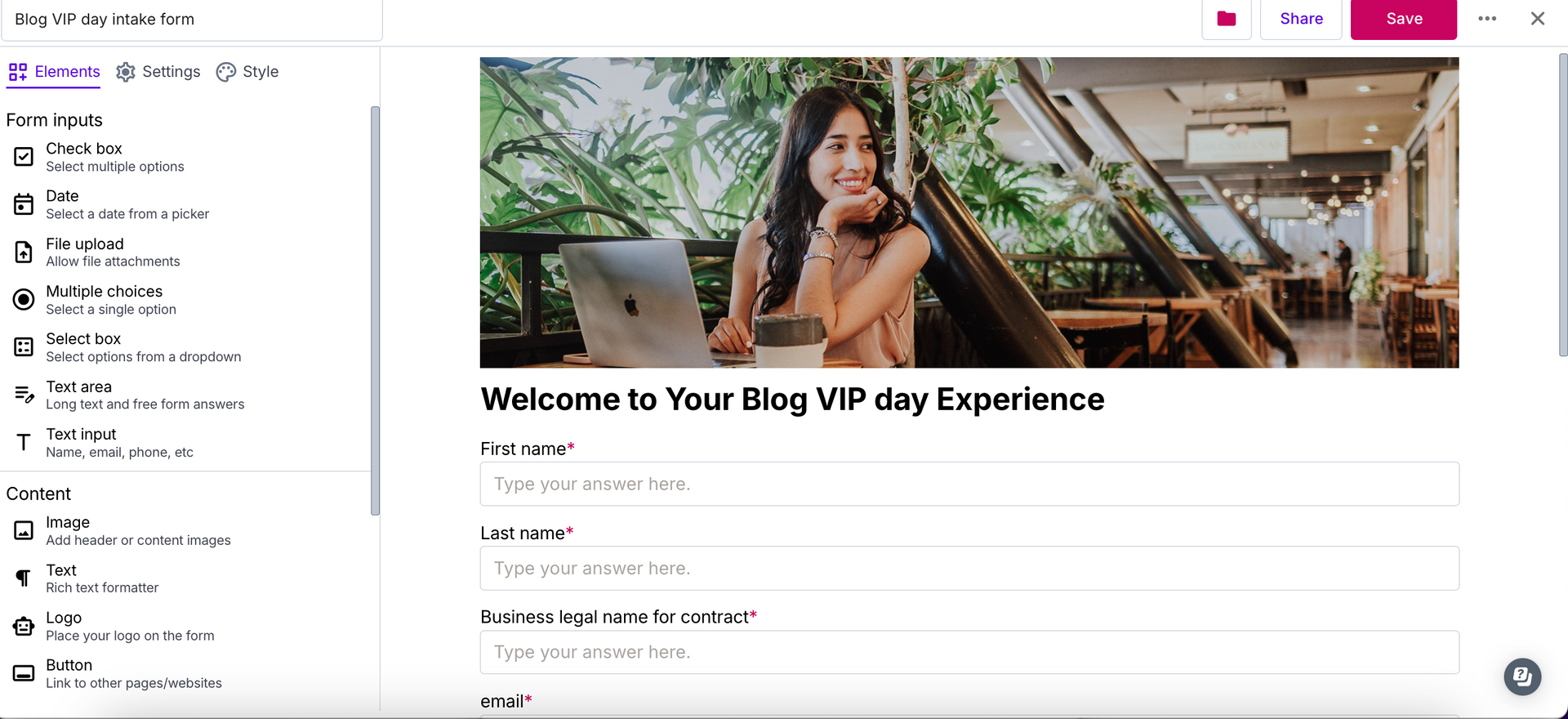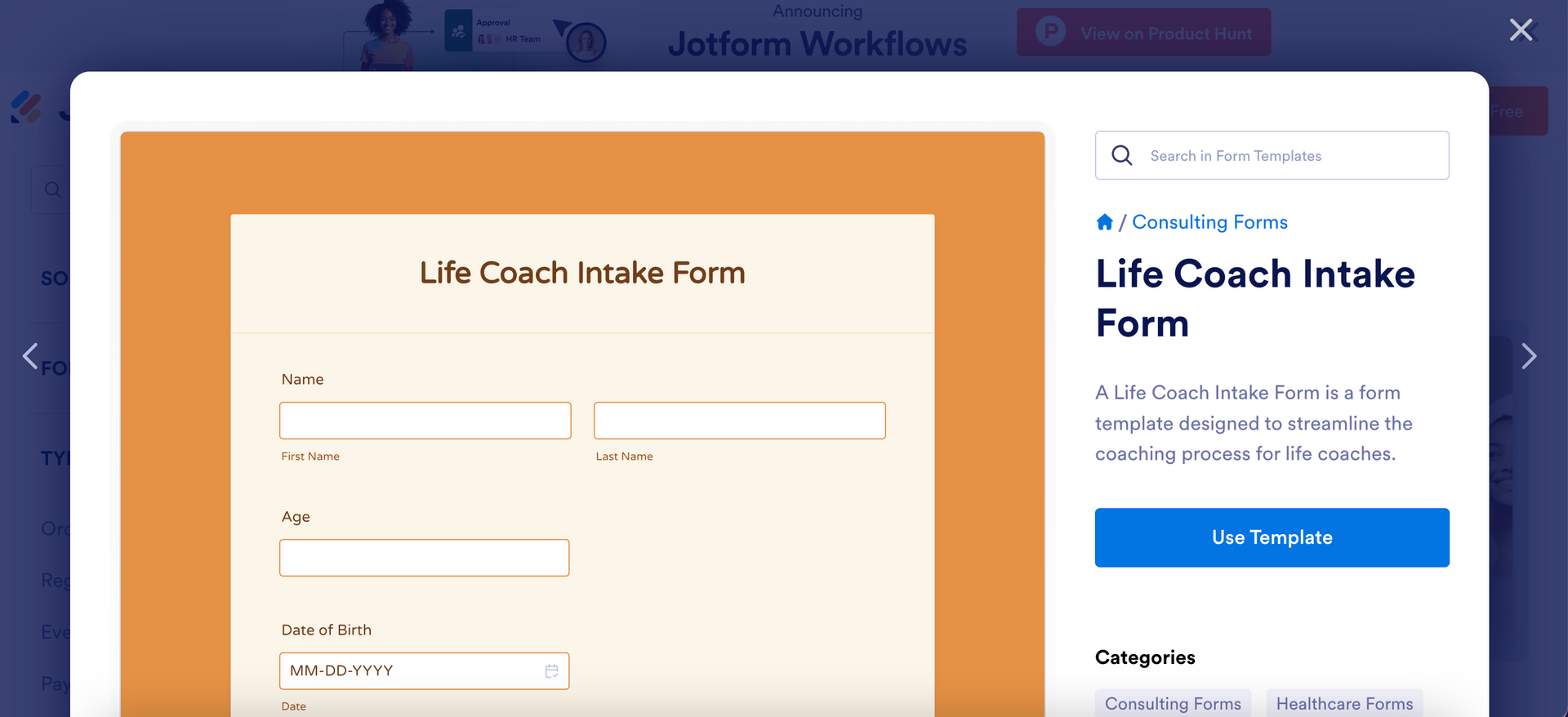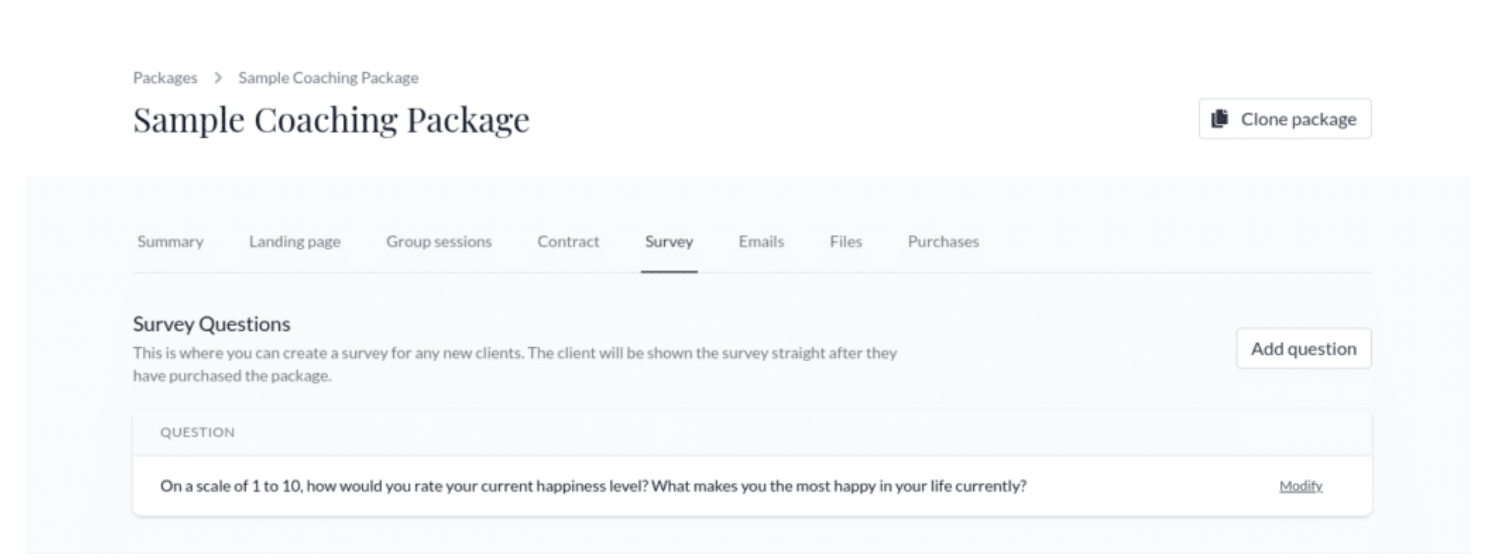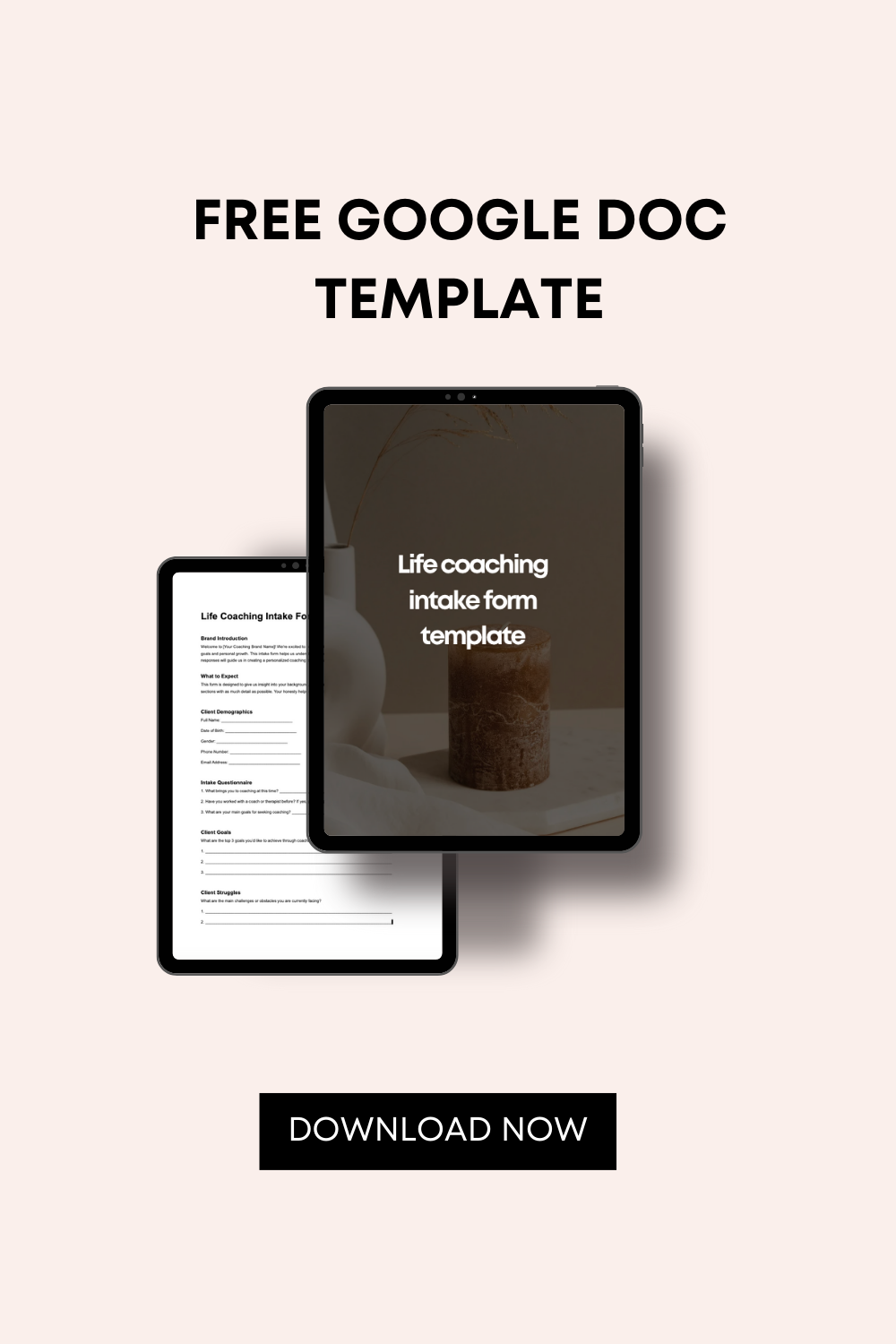Life coaching intake form: free template and what to include
If you're a life coach, you know that client onboarding is the first step in creating a successful coaching relationship. But what happens when you’re unsure of what to include in your intake form? Many coaches struggle with knowing the right questions to ask, how to organize the information, and how to streamline the process to make it easy for both them and their clients.
Don’t worry—I've got you covered!
In case we haven’t met, I’m Natalia Maganda, a web designer for life coaches . I help conscious service providers create strategic and beautiful websites that simplify their onboarding process and attract dream clients. Today, I’ll walk you through everything you need to create a powerful life coaching intake form and give you a free template to get started.
Ready to level up your client experience? Let’s dive in!
Why is a life coaching intake form important?
A life coaching intake form is more than just a questionnaire; it’s the foundation of your client relationship. It sets the tone for your coaching sessions, helping you gather essential information about your client’s goals, struggles, and motivations. This form allows you to connect on a deeper level and create a customized coaching plan that truly resonates with their needs. Without it, you might feel lost when trying to figure out how best to serve your clients.
Prepping for the intake form: what to consider
You might be thinking, “But what exactly should I include in my intake form?” or “How can I make sure it’s efficient without being overwhelming for my clients?” These are common concerns, and the truth is, creating an intake form doesn’t have to be complicated. The goal is to streamline your process, gather all the necessary details, and set clear expectations from the start.
Here’s the good news: an effective life coaching intake form will not only help you better understand your clients but will also save you time in the long run. By automating and organizing your intake process, you can ensure that every client has a consistent and welcoming experience from the moment they reach out to you. And the best part? I’ve got a done-for-you template you can download for free!
What exactly is a life coaching intake form?
A life coaching intake form is a document that coaches use during the onboarding process to gather essential client information. It includes everything from basic demographics to in-depth questions about a client’s goals, challenges, and motivations. This form acts as a roadmap, guiding your sessions and helping you tailor your approach to each individual’s needs. It’s not just about paperwork—it’s about building a foundation of trust and clarity.
What to include in a life coaching intake form
An effective life coaching intake form should cover several key areas to give you a well-rounded understanding of your client’s needs and expectations. Here’s a breakdown of the essential sections:
Brand introduction
Start with a brief introduction to your coaching brand. This sets the tone for the entire process and lets clients know what they can expect from working with you. It could be something as simple as, “Welcome to [Your Coaching Brand]! I’m excited to support you on your journey to personal growth and fulfillment.”
What to expect
Outline what clients can expect during the coaching process. This helps set clear expectations and reduces any uncertainty they may feel. Include details like how often sessions will occur, what the typical session looks like, and any homework or exercises they may receive.
Client demographics
Gather basic information such as:
- Name
- Age
- Gender
- Contact details (phone number and email)
- Preferred method of communication
Intake questionnaire
Dive into more specific questions that help you understand the client’s current situation:
- What brings you to coaching at this time?
- Have you worked with a coach or therapist before? If so, what was your experience like?
- What are the main goals you want to achieve through coaching?
Client goals
Ask clients to outline their top goals for the coaching process. This could include professional aspirations, personal growth, or specific habits they want to build or change.
Struggles
Identify the main obstacles they are currently facing:
- What are the biggest challenges preventing you from reaching your goals?
- How do these challenges affect your daily life?
Motivations
Understanding what motivates your clients can help you keep them engaged and focused:
- What motivates you to pursue these goals at this time?
- What would achieving these goals mean for you personally or professionally?
Expectations
Set the stage for a collaborative relationship by asking about their expectations:
- What do you expect to gain from our sessions?
- Are there any specific areas you’d like to focus on during our time together?
Next steps
Finish the form with a section outlining the next steps. Let clients know what happens after they submit the form and how they can schedule their first session. This is a great opportunity to reassure them that they’re taking the right steps toward positive change.
Where can I design a life coaching intake form?
Now that you know what to include, you might be wondering how to create a professional and visually appealing form. Here are some platforms and tools you can use to design your life coaching intake form:
Download our done-for-you template (google doc)
To make things easy for you, I’ve created a ready-to-use life coaching intake form template that you can download here . Customize it with your branding and questions, and you’re good to go!
Canva
Canva is a fantastic tool for creating beautiful and customized intake forms. They offer a variety of templates that you can personalize with your logo, colors, and fonts. The drag-and-drop interface makes it simple, even if you have no design experience.
How to create fillable intake forms that connect to a CRM
Automating your intake process can save you a lot of time and keep your client information organized. By using a CRM (customer relationship management) tool, you can create fillable intake forms that connect directly to your system. Here are my favorite platforms:
Moxie
Moxie
is my top pick for life coaches. It’s user-friendly, affordable, and integrates seamlessly with your existing tools. Moxie’s forms feature allows you to create fillable forms that clients can complete online, and it automatically stores their information in your CRM. Pricing starts at $25/month. View most
up-to-date pricing here
.

Jotform
Jotform
offers a range of templates specifically for coaches. It’s an easy-to-use platform that lets you create fillable forms and automate your onboarding process. You can even embed these forms directly into your website.

Paperbell
Paperbell
is another great option for coaches. It offers forms that sync with your client scheduling and payment system, making it a one-stop-shop for your coaching business. Pricing starts at $57 per month. Check their website for the latest pricing.

Other options
- Profi : Offers a robust template library and integrates with other tools for a seamless client experience.
- CoachVantage : Provides customizable intake forms that connect to its CRM, streamlining your client management.
- Practice.do : Specializes in forms and contracts for coaches, ensuring that your intake process is smooth and professional.
Streamline your onboarding process with ease
A well-crafted life coaching intake form is the key to starting your client relationships on the right foot. It helps you gather the necessary information, set clear expectations, and create a customized plan that aligns with your client’s goals. By using the right tools and templates, you can automate the process, save time, and offer a seamless experience that impresses your clients from the start.
Ready to take your coaching business to the next level? Explore my web design services for life coaches and let’s build a site that simplifies your intake process, connects you with clients, and grows your practice.
Related reads:
- 30 branding ideas for life coaches
- How to get clients for your coaching business
- SEO for life coaches and how to grow your traffic

* AI Disclosure: This content may contain sections generated with AI with the purpose of providing you with condensed helpful and relevant content, however all personal opinions are 100% human made as well as the blog post structure, outline and key takeaways.
* Affiliate Disclosure: Some of the links on www.nataliamaganda.com may contain affiliate links meaning that I will get a commission for recommending products at no extra cost to you.

hello! i'm natalia
Latina, web design expert for mental health professionals.
I help ambitious life coaches, therapists and holistic leaders amplify their magic, gain visibility, and simplify their marketing efforts through strategic web design and content.











